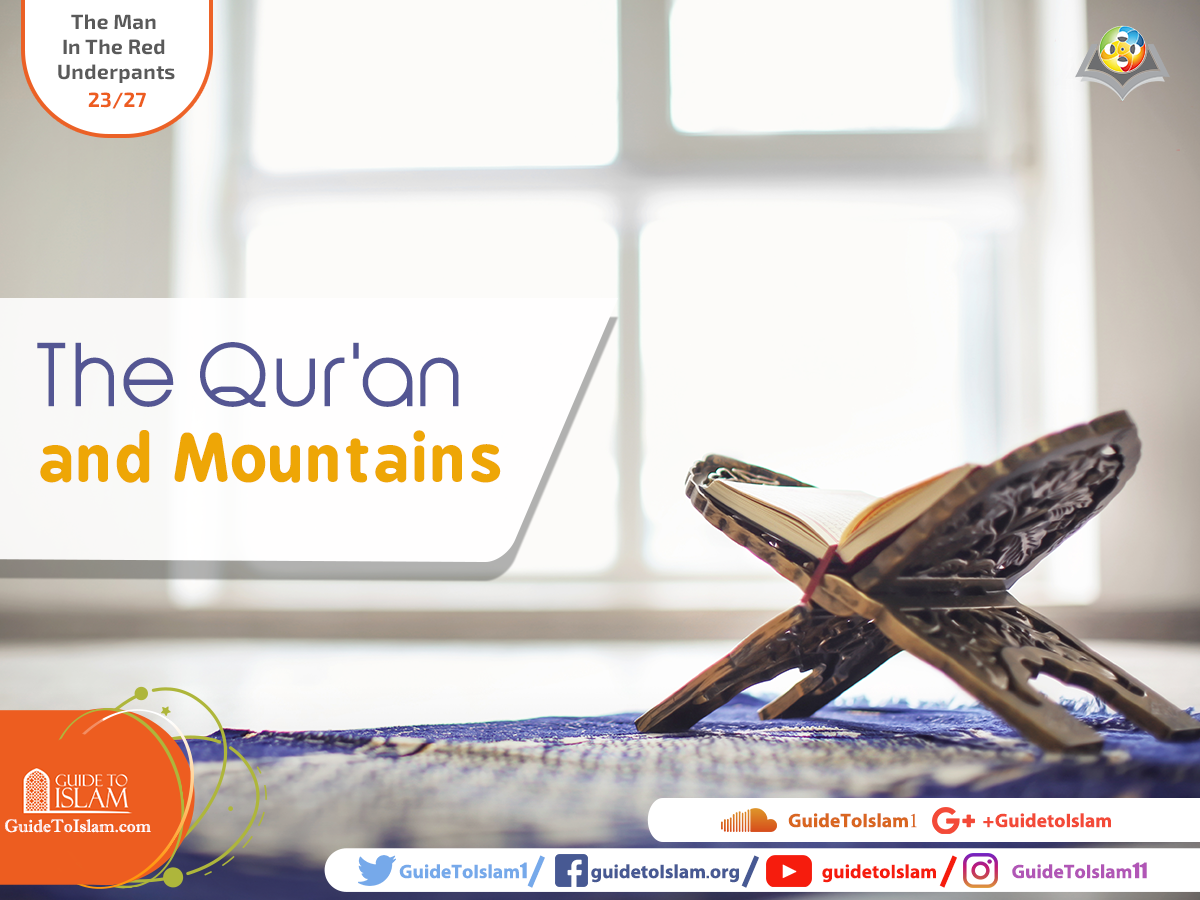The Qur'an and Mountains

Another interesting statement that is found in the Quran concerns the mountains:
“Have We not made the earth as a bed, and the mountains as pegs?” [The Quran; Chapter 78 – The Great News, verse 6]
Today we know that mountains have deep roots under the surface of the ground and that these roots can reach several times their elevations above the surface of the ground. So the most suitable word to describe mountains on the basis of this information is the word ‘peg’, since most of a properly set peg is hidden under the surface of the ground. This theory of mountains having deep roots was introduced only in the latter half of the nineteenth century. Mountains also play an important role in stabilizing the crust of the earth. They hinder the shaking of the earth.
“And He has set firm mountains in the earth so that it would not shake with you…” [The Quran; Chapter 16 – The Bees, verse 15]
Likewise, the modern theory of plate tectonics holds that mountains work as stabilizers for the earth. This knowledge about the role of mountains as stabilizers for the earth has just begun to be understood in the framework of plate tectonics since the late 1960s!
The Quran mentions many things about the natural world and asks us to think deeply and contemplate, and that those with understanding will realise that these are all signs that point to the power and wisdom of its Creator, that all of this is not for nothing or for entertainment, but rather for a profound and noble purpose.
The Quran is not meant to be a book of science, but a book of signs. It is easy to understand how the Creator would know about the common origin of the universe, the details of embryonic development and that mountains have roots, but it is not easy to explain how Mohammed managed to include this information in the Quran unless we accept his claim to be a Messenger. It would seem that accepting this would be the most sensible thing for a rational, sincere person to do.

